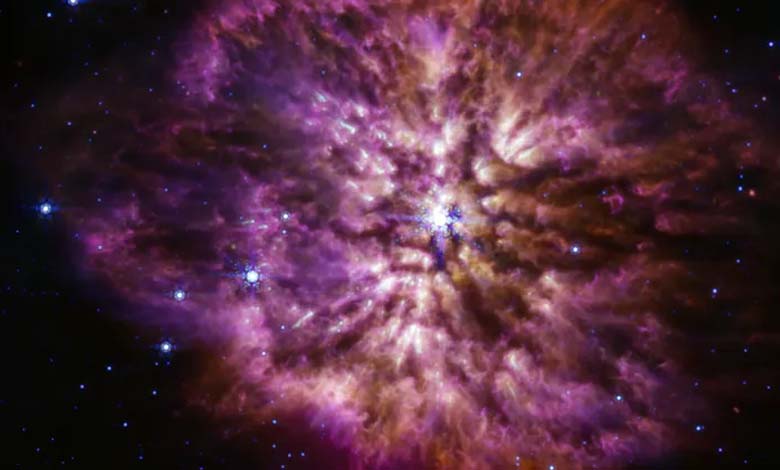NASA Telescopes Begin the Year by Monitoring a Double Explosion

Researchers at the National Taiwan University in Taipei conducted a study on the remnants of the Great Eruption in the “Dorado B 30” region, located 160,000 light-years away in the Large Magellanic Cloud.
Over millions of years, this cloud has been teeming with star formations, creating a complex natural scene of celestial features.
The study utilized data from various telescopes, including NASA‘s Chandra X-ray Observatory, Blanco Telescope, Hubble Space Telescope, and Spitzer Space Telescope, to analyze that region and its surroundings. The combination of data sources revealed a multi-layered image of the remnants of the Great Eruption.
The team’s analysis unveiled a massive X-ray shell stretching about 130 light-years across the region, attributed to the remnants of at least two explosions from the great eruptions. According to a report published on NASA‘s official website, “One of the great eruptions, about 5000 years ago, likely produced the pulsating star and the bright central X-rays, while the fainter, expanding X-ray shell appears to be the result of another, even larger supernova explosion.”
Researchers suggest that more Great Eruption events may have occurred in the distant past, contributing to the observed celestial features.
The results provide valuable insights into the lives of massive stars and the consequences of great eruption explosions. Understanding these phenomena helps astronomers unveil the dynamics of star formation, evolution, and the effects of such eruption events on cosmic environments.
This study represents a significant step in understanding the complex interactions of celestial events in the “Dorado B 30” region.












